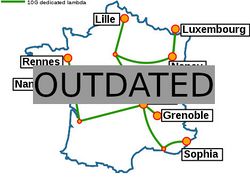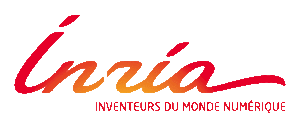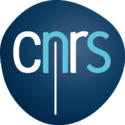Grid5000:Home: Difference between revisions
No edit summary |
No edit summary |
||
| Line 7: | Line 7: | ||
Key features: | Key features: | ||
* provides '''access to a large amount of resources''': | * provides '''access to a large amount of resources''': 15000 cores, 800 compute-nodes grouped in homogeneous clusters, and featuring various technologies: GPU, SSD, NVMe, 10G and 25G Ethernet, Infiniband, Omni-Path | ||
* '''highly reconfigurable and controllable''': researchers can experiment with a fully customized software stack thanks to bare-metal deployment features, and can isolate their experiment at the networking layer | * '''highly reconfigurable and controllable''': researchers can experiment with a fully customized software stack thanks to bare-metal deployment features, and can isolate their experiment at the networking layer | ||
* '''advanced monitoring and measurement features for traces collection of networking and power consumption''', providing a deep understanding of experiments | * '''advanced monitoring and measurement features for traces collection of networking and power consumption''', providing a deep understanding of experiments | ||
Revision as of 20:53, 19 January 2020
|
Grid'5000 is a large-scale and flexible testbed for experiment-driven research in all areas of computer science, with a focus on parallel and distributed computing including Cloud, HPC and Big Data and AI. Key features:
Grid'5000 is merging with FIT to build the SILECS Infrastructure for Large-scale Experimental Computer Science. Read an Introduction to SILECS (April 2018)
Older documents:
|
Random pick of publications
Five random publications that benefited from Grid'5000 (at least 2925 overall):
- Thomas Firmin, Pierre Boulet, El-Ghazali Talbi. Asynchronous Multi-fidelity Hyperparameter Optimization Of Spiking Neural Networks. International Conference on Neuromorphic Systems (ICONS 2024), Jul 2024, Washington, United States. hal-04781629 view on HAL pdf
- Fatmir Asllanaj, Sylvain Contassot-Vivier, Guilherme C Fraga, Francis H.R. França, Roberta J.C. da Fonseca. New gas radiation model of high accuracy based on the principle of weighted sum of gray gases. Journal of Quantitative Spectroscopy and Radiative Transfer, 2024, 315, pp.108887. 10.1016/j.jqsrt.2023.108887. hal-04375649 view on HAL pdf
- Pierre-François Gimenez, Jérôme Mengin. Learning Conditional Preference Networks: an Approach Based on the Minimum Description Length Principle. IJCAI 2024 - 33rd International Joint Conference on Artificial Intelligence, Aug 2024, Jeju, South Korea. pp.3395-3403, 10.24963/ijcai.2024/376. hal-04572196 view on HAL pdf
- Cédric Prigent, Melvin Chelli, Alexandru Costan, Loïc Cudennec, René Schubotz, et al.. Efficient Resource-Constrained Federated Learning Clustering with Local Data Compression on the Edge-to-Cloud Continuum. HiPC 2024 - 31st IEEE International Conference on High Performance Computing, Data, and Analytics, Dec 2024, Bengaluru (Bangalore), India. pp.1-11, 10.1109/HiPC62374.2024.00033. hal-04779813 view on HAL pdf
- Cédric Boscher, Nawel Benarba, Fatima Elhattab, Sara Bouchenak. Personalized Privacy-Preserving Federated Learning. Proceedings of the 25th International Middleware Conference, Dec 2024, Hong Kong, China. pp.454--466, 10.1145/3652892.3700785. hal-04770214 view on HAL pdf
Latest news
Failed to load RSS feed from https://www.grid5000.fr/mediawiki/index.php?title=News&action=feed&feed=atom: Error parsing XML for RSS
Grid'5000 sites
Current funding
As from June 2008, Inria is the main contributor to Grid'5000 funding.
INRIA |
CNRS |
UniversitiesUniversité Grenoble Alpes, Grenoble INP |
Regional councilsAquitaine |


